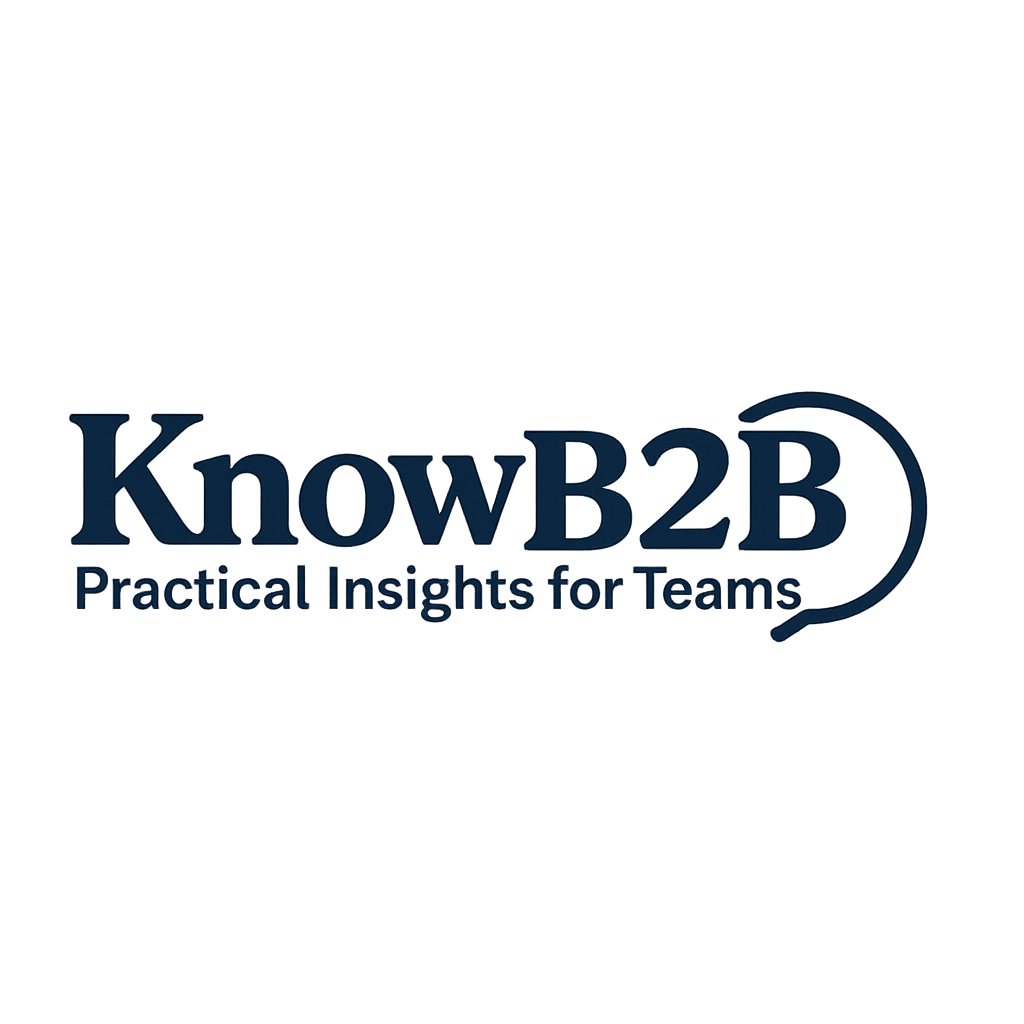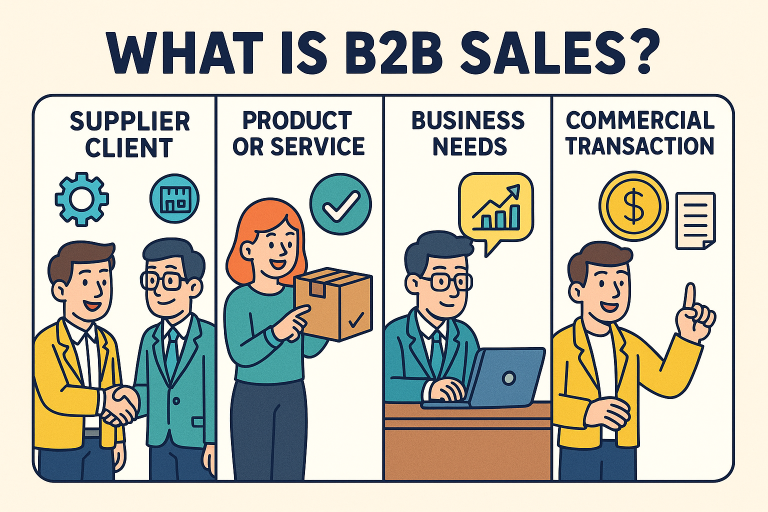1. Introduction: Why Sales Management Is a Survival Strategy in B2B
In B2B businesses, sales isn’t just about growth — it’s about survival. A commonly heard principle in B2B is: “Customer-centricity fuels growth; cash flow ensures survival.” Effective sales management must align with both.
Whether you’re a startup, SME, or enterprise, sales success hinges on three core goals:
- More high-quality leads
- Higher conversion rates across the funnel
- Stronger, faster cash flow
This guide walks you through a structured approach to sales management based on these three imperatives, with practical frameworks and real-world insights.
2. Lead Management: Where Are Your Best Opportunities Coming From?
2.1 Understanding Your Lead Sources
To improve your lead pipeline, ask yourself:
- What are our primary lead generation channels? (Online, offline, referrals, etc.)
- What is the cost and ROI per channel?
- Which sources drive the most qualified leads and eventual revenue?
Building this picture requires consistent lead tracking and data hygiene. If you’re still offline-first or lack CRM infrastructure, use shared spreadsheets with unique lead IDs to start mapping origin, status, and outcome.
2.2 The ROI and Evolution of Channels
Channels evolve. What worked yesterday may not work today.
In the renovation industry, companies once thrived on door-to-door flyers and purchased phone lists. Today, those sources are drying up fast. Rising acquisition costs in digital ads (up to $4,000-5,000 per lead) mean unsustainable CACs for many.
Yet some companies still thrive by pivoting to referrals and owned media, such as:
- WeChat groups, TikTok live sessions
- Personal branding on LinkedIn
- Community-based outreach
2.3 Are You Fishing in the Right Pond?
Beyond volume and cost, ask: Are we visible where our best-fit buyers spend time?
If you sell to high-income professionals, TikTok ads may underperform compared to airport ads or peer referrals. One luxury menswear brand thrived by setting up shops in airports — a natural gathering point for their target customers.
Key takeaway: Map lead sources to customer behavior, not just channel ROI.
3. Market Strategy: Reach, Attract, and Engage Decision-Makers
3.1 Segment Your Buyers
- Who are our primary customer segments?
- What are their core needs, pain points, and purchase triggers?
Understanding this segmentation allows more tailored messaging and channel allocation.
3.2 Identify Key Buyer Scenarios
What moments or environments are ideal for reaching your buyers?
- Commuting? Airports?
- Coworking spaces?
- Industry events or online webinars?
Market strategy is about showing the right message to the right people in the right setting.
3.3 Case Study: Lululemon and the Supergirl
Though not a B2B brand, Lululemon’s early market strategy offers strong lessons. They targeted a rising niche: independent, fitness-driven women they dubbed “Supergirls.”
They built their brand by:
- Giving yoga instructors free apparel (micro-influencer seeding)
- Hosting free classes in-store to build community
- Choosing physical locations next to yoga studios
In the B2B world, this is akin to co-marketing with consultants, hosting use-case-driven events, or embedding your brand in existing professional ecosystems.
4. Conversion Management: Turning Leads Into Closed Deals
Conversion is not a single step — it’s a multi-stage journey:
- Lead to Opportunity (LTO): Qualifying raw leads
- Opportunity to Deal (OTO): Closing business
- Deal to Cash (DTC): Ensuring revenue collection
4.1 Lead Qualification & Scoring
Define what makes a lead “qualified.” For example:
- Budget: Min. $50K project value
- Decision timeline: <90 days
- Intent level: Clear pain point identified
Salespeople should use checklists or CRM attributes to score and categorize leads accordingly.
4.2 Opportunity Management
For a qualified opportunity, the focus shifts to:
- Pain point diagnosis
- Custom solutioning
- Value alignment
Frameworks like MEDDIC or SPIN Selling work well in B2B:
- Metrics
- Economic buyer
- Decision criteria
- Decision process
- Identify pain
- Champion
4.3 Sales Team Capability
Effective conversion isn’t just process-driven. It’s people-driven:
- Do your reps understand the buyer journey?
- Are they consultative or transactional?
- Do they follow consistent messaging?
Coaching, call reviews, objection-handling playbooks, and demo simulations all contribute to higher close rates.
5. Cash Flow Optimization: From Contract to Collection
You can’t pay bills with closed-won contracts. You need cash.
Strategies to Improve Cash Flow:
- Accelerate collections: Incentivize upfront or milestone-based payments
- Shorten payment terms: Shift from Net-60 to Net-30 or milestone-based
- Offer prepay discounts
- Lower CAC: Focus on high-intent channels and organic reach
Also, rethink how sales, delivery, and finance collaborate to prevent payment delays.
6. Sales Performance Review: Managing the Funnel, Not Just the Numbers
The sales funnel is more than a visual. It’s a strategic tool.
| Funnel Stage | Focus | Responsible Function |
|---|---|---|
| Lead Gen | Volume, Quality | Marketing, BDRs |
| Qualification | Fit, Intent | Sales Ops |
| Proposal | Value Alignment | Account Execs |
| Close | Negotiation, Contracting | Legal, Sales |
| Collection | Cash Flow | Finance, RevOps |
Key Principle:
Don’t manage by metrics. Manage by the actions that move the metrics.
Sales reviews should focus not just on outcomes (conversion rates) but on:
- Lead source effectiveness
- Process consistency
- Team readiness
- Departmental collaboration
When teams operate in silos, conversion breaks. Align goals, share context, and revisit resource allocations regularly.
Final Thought
Sales management is not just about hitting numbers. It’s about building a system that scales reliably, adapts quickly, and delivers real business outcomes. By structuring your sales operations around lead flow, conversion process, and cash velocity, your B2B business is better equipped to grow, survive, and lead.



